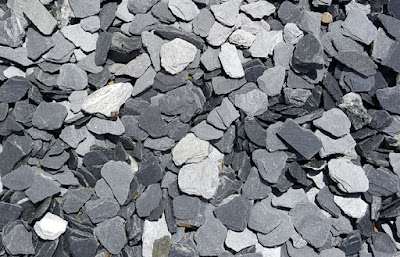Introduction:
Using stones in a home garden can add texture, contrast, and a natural feel to your outdoor space. Whether you're creating a peaceful retreat, a vibrant flower bed, or a functional pathway, incorporating decorative stones can enhance the beauty and character of your garden. Stones not only serve aesthetic purposes but also help with drainage, reduce weed growth, and prevent soil erosion. Here’s a guide to the most popular types of stones you can use to decorate your garden.
1. River Rock:
River rocks are smooth, rounded stones that come in a variety of sizes and colors, ranging from light browns and tans to grays and whites. They are often used for decorative purposes in garden beds, around ponds, or in dry river beds. Their smooth texture and natural appearance make them perfect for creating tranquil, zen-like garden spaces.
Uses:
River rocks can be used in water features, such as ponds and fountains, or as decorative borders around flower beds. They are also great for creating a natural-looking dry stream bed.
Advantages:
Their rounded edges give a softer, more natural look compared to sharper-edged stones. They are also good for areas that experience heavy rain, as they promote excellent drainage.
River rocks are an excellent choice if you’re looking for a natural and calming aesthetic in your garden.
2. Gravel:
Gravel is a popular choice for many garden projects because of its versatility and affordability. It consists of small, crushed stones that can vary in size and color. Gravel is often used for driveways, pathways, and mulching garden beds.
Uses:
Gravel works well for paths, driveways, and as ground cover in garden beds. It can also be used around fire pits or in rock gardens.
Advantages:
It provides excellent drainage, helps to prevent weed growth, and is easy to maintain. Gravel is also relatively inexpensive and comes in various colors, such as gray, white, and brown, allowing you to match it to your garden design.
For a low-cost, low-maintenance solution that fits into any garden design, gravel is an ideal option.
3. Pea Gravel:
Pea gravel consists of small, rounded stones, typically no larger than a pea, and is often used in walkways and patios. It comes in various colors, including tans, browns, grays, and whites, which can complement different garden styles.
-Uses:
Pea gravel is often used for pathways, patios, or around stepping stones. It can also be spread around garden beds or used in container gardens to improve drainage.
Advantages:
Its small size and smooth texture make it comfortable to walk on, and it is easy to install. Pea gravel also prevents weed growth and helps to retain moisture in the soil when used as mulch.
Pea gravel is perfect for creating comfortable, natural-looking walkways that blend seamlessly into the landscape.
4. Lava Rock:
Lava rock is a porous, lightweight volcanic stone that comes in deep red, black, and brown colors. Its bold hues can create a striking contrast in any garden, making it an excellent decorative element.
Uses:
Lava rocks are often used as mulch around plants, in garden beds, or to line pathways. They are also used in xeriscaping, a landscaping style that requires little to no irrigation.
Advantages:
Lava rock retains heat, which can be beneficial for plants that thrive in warm environments. It’s also lightweight, easy to spread, and helps to reduce soil erosion.
Lava rock is a great choice if you want to add color and texture to your garden while minimizing water usage.
5. Flagstone:
Flagstone is a flat, wide type of stone that comes in irregular shapes and sizes, making it ideal for creating pathways, patios, and stepping stones. Flagstone is available in a variety of colors, including shades of blue, gray, and brown, and can be used to give your garden a rustic or formal appearance.
Uses:
Flagstone is most commonly used for creating garden paths, patios, and stepping stones. It can also be used for garden walls and borders.
Advantages:
Its flat surface makes it perfect for walkways, and its natural look can complement both traditional and contemporary garden designs. Flagstone is also durable and low-maintenance.
For a polished, long-lasting garden feature, flagstone is an excellent option that provides both beauty and functionality.
6. Slate Chips:
Slate chips are thin, flat pieces of stone that are often used as mulch or for decorative ground cover. Available in a range of colors such as gray, black, and even shades of purple, slate chips add a sleek, modern touch to gardens.
Uses:
Slate chips work well as mulch in garden beds or as decorative pathways. They can also be used around trees or shrubs to create a contemporary look.
Advantages:
Slate chips are durable, long-lasting, and help to prevent weed growth. They also retain moisture in the soil and offer a more refined look than other types of stone.
If you’re looking for a stone that offers a chic, modern appearance, slate chips are a great choice.
7. Cobblestone:
Cobblestones are larger, rounded stones that are traditionally used for creating garden pathways, edging, and even driveways. They offer a timeless, classic look and are often associated with old-world charm.
Uses:
Cobblestones are ideal for creating pathways, driveways, and garden borders. They can also be used to build retaining walls or to outline garden beds.
Advantages:
Cobblestones are extremely durable and can last for many years. They provide a stable surface for foot traffic and can withstand heavy use, making them ideal for high-traffic areas.
For a garden that exudes classic elegance, cobblestones provide an attractive and long-lasting solution.
Conclusion:
Choosing the right type of stone for your garden depends on your aesthetic preferences, practical needs, and climate. Whether you're aiming for a natural, rustic appearance or a sleek, modern look, there is a decorative stone that can help you achieve your vision. From river rocks and pea gravel to flagstone and cobblestones, incorporating stones into your garden can enhance its beauty, functionality, and longevity.











.jpg)
.jpg)
.jpg)

0 Comments